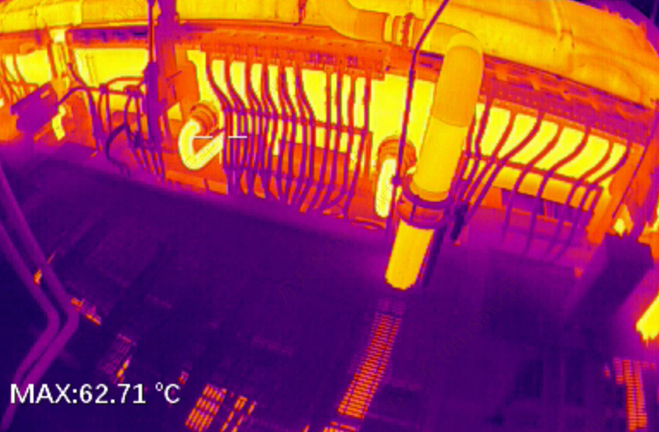As autumn approaches and rainfall decreases, dry and windy conditions become more common, significantly raising the risk of fire incidents. To effectively prevent and reduce the occurrence of fires, it's essential to remember fire safety knowledge in various scenarios. Regularly check for fire hazards in your surroundings, as negligence can lead to catastrophic consequences.
Infrared Thermography Devices: Fire Detection
In vast forested areas, hidden embers often exist unnoticed. Similarly, grain fires are generally subtle; the smoldering of grain storage facilities can last for extended periods, making it difficult to detect, which leads to significant losses annually. Traditional methods struggle to identify low-intensity hidden fires in large forests or warehouses, yet these fires can be the source of devastating wildfires.
Infrared thermography devices play a crucial role in this context, offering three key advantages: early detection of fire conditions, determination of the fire's extent and severity, and pinpointing the fire location for effective extinguishing measures. By integrating automatic recognition algorithms with thermal imaging network platforms, intelligent video monitoring, automatic identification, and alarm linkage can be achieved.
Since infrared thermography cameras visualize the temperature of an object's surface, they serve not only as effective monitoring tools at night but also as reliable fire alarm devices. For instance, in extensive forest areas, long-range thermal imaging PTZ (pan-tilt-zoom) cameras can quickly and effectively detect hidden fires, accurately identifying the fire's location and extent. This capability enables the detection of ignition points through thick smoke, allowing for swift action to extinguish the fire in its early stages and alerting authorities promptly, thereby minimizing property damage.
In industries such as power generation, thermography cameras can be crucial for monitoring the operation of industrial equipment. They can detect temperature changes in electrical devices like transformers. When combined with thermal analysis software, these cameras can identify abnormal temperature variations and trigger alarm systems, facilitating self-protection of the system and proactive alerts to prevent significant industrial accidents.
Infrared Thermography Device: Fire Scene Search and Rescue
Infrared applications, based on the inherent infrared thermal radiation properties of objects, have led to the development of detection technologies in fire scenarios. Infrared search and rescue technology greatly enhances the ability to visualize shapes and temperatures of targets amidst complex conditions such as smoke, heat, and building collapses. This technology assists firefighters in quickly locating trapped individuals and valuable items while also identifying ignition points or the largest sources of fire. By reducing response time, it minimizes damage and serves as a powerful tool in fire rescue operations.
Compared to traditional fire-fighting methods that rely on visual inspection, infrared thermography devices allow firefighters to see clearly through smoke and darkness, enabling them to accurately assess the true situation at the fire scene and make informed decisions swiftly.
Moreover, infrared thermography technology plays a significant role in fire inspections. Using infrared cameras, inspectors can quickly locate hidden leaks caused by equipment failures and promptly shut off valves to stop the flow. Essentially, any chemical production device, pipeline, equipment, or storage unit associated with thermal radiation energy and temperature can be inspected for leaks and other fire safety hazards using infrared thermography.
Compared to conventional detection methods, professional infrared thermography cameras offer high accuracy, fast detection, 24/7 continuous monitoring, and non-contact assessment. This technology supports more firefighting teams in navigating high-temperature fire scenarios and smoky environments to swiftly locate trapped individuals and accurately identify fire sources, thereby extinguishing fire incidents and safeguarding lives.













.svg)



_fuben.jpg)

